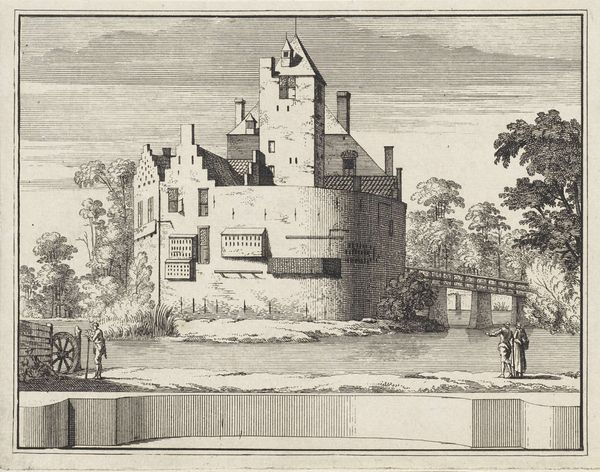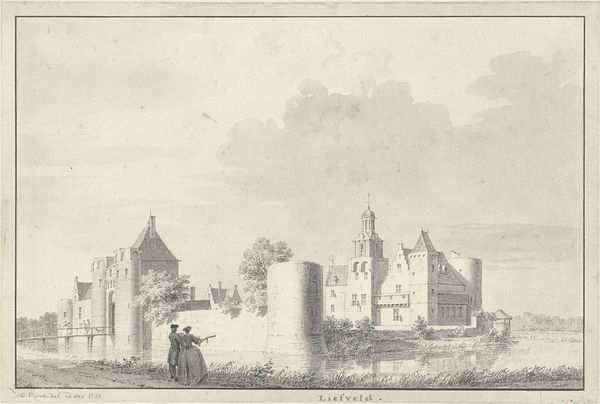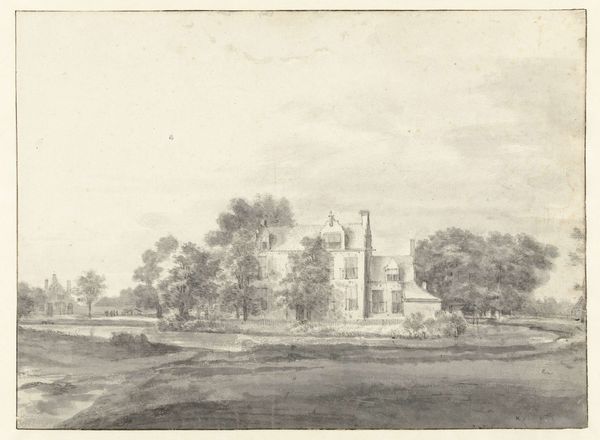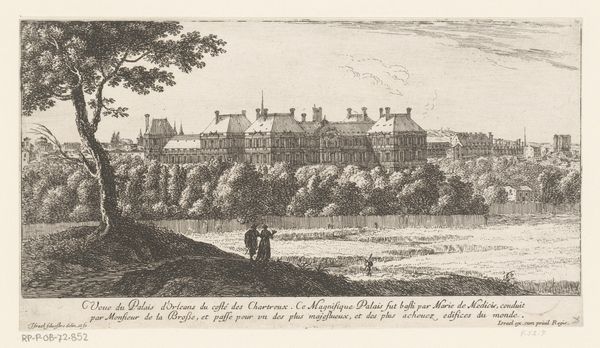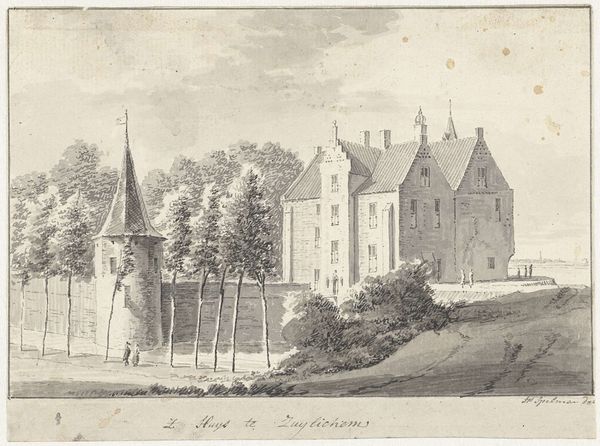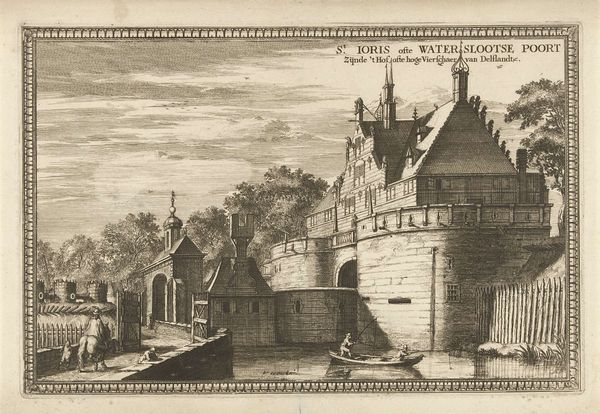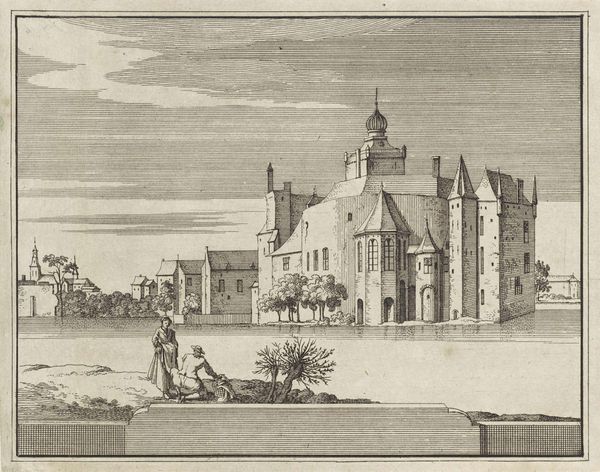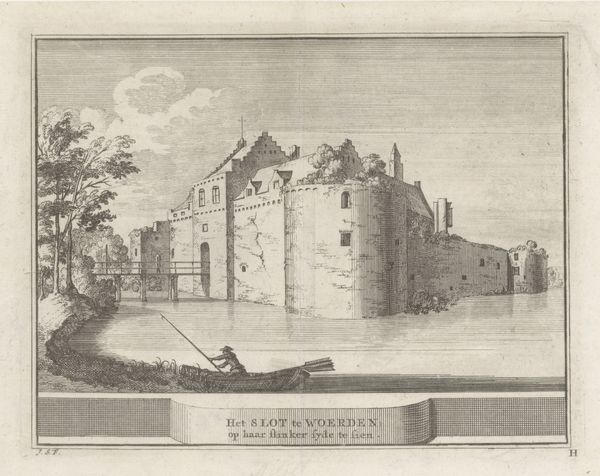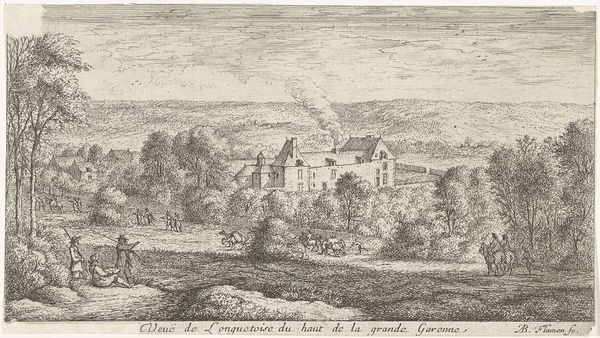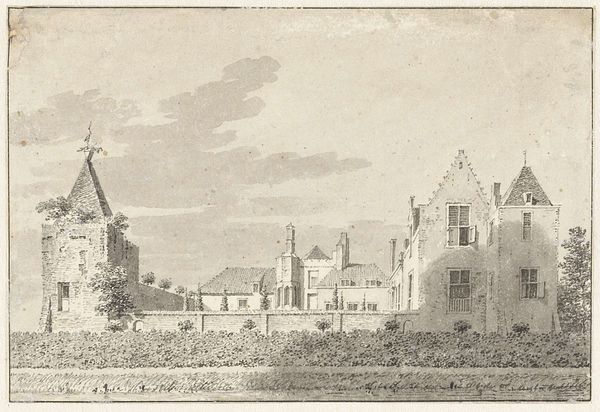
drawing, ink, pencil
#
drawing
#
baroque
#
landscape
#
ink
#
pencil
#
cityscape
Dimensions: height 76 mm, width 102 mm
Copyright: Rijks Museum: Open Domain
Editor: This drawing, "De Broekerpoort te Oudewater," is attributed to Hendrik de Winter and dates roughly from 1727 to 1790. Executed in pencil and ink, it’s a charming little cityscape, held here at the Rijksmuseum. I find the muted palette gives it such a placid and serene quality, a real sense of the everyday. What catches your eye when you look at it? Curator: The gate itself speaks volumes, doesn't it? These architectural features aren't just stone and mortar; they’re embodiments of civic identity, built to project strength but inevitably mellowing with age, acquiring a certain picturesque quality. What feelings do the figures in the foreground evoke for you? Editor: They seem to add a sense of scale and also suggest that this imposing gate was just a part of everyday life for the residents. Curator: Precisely. And note how de Winter has positioned the gate. Its slight remove from the foreground and that hazy background subtly hint at the relentless march of time. The gate is a fixed point, yet the people passing through suggest the constant flow of generations, each carrying its own stories. Are there particular symbols here that jump out at you? Editor: Well, the water acts as a boundary, I guess. And the figures seem to be interacting right at the intersection between town and countryside. It makes you wonder where they’re going, or where they’ve been. Curator: It's that liminal space that's so fascinating. These subtle visual cues give the image its cultural weight, evoking both a shared past and the individual journeys that make up a community. Editor: I hadn’t thought about it in quite that way, as a symbol of collective and individual histories converging. I'll definitely look at these cityscapes differently now!
Comments
No comments
Be the first to comment and join the conversation on the ultimate creative platform.
